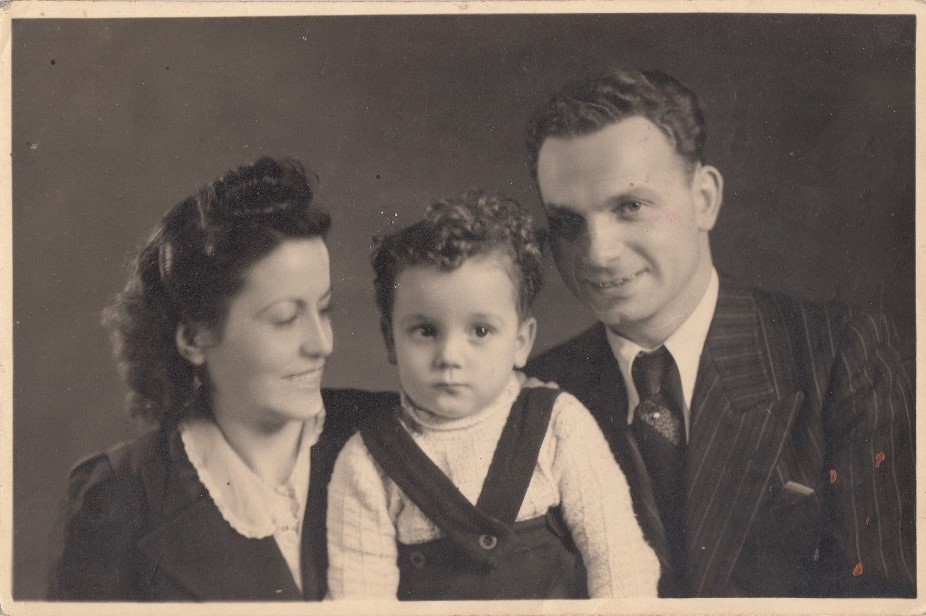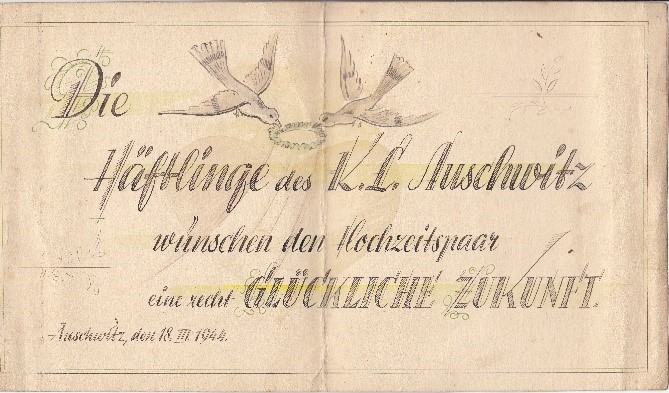Rudolf Friemel
(Vienna 1907 – Auschwitz 1944): One of the resistance fighters
“I shall die upstanding and for my ideals”
Rudolf Friemel’s long road to Auschwitz can be traced back to Vienna, and began with his involvement in the Social Democratic workers’ movement, the Republican Protection League, and imprisonment at the Stein penitentiary from 1934 to 1936. As the political situation intensified, with the democratic principle being torn down by Fascism and Communism in many European nations, like many others he joined the Communist movement in 1936 and the International Brigades in Spain. In 1939 he fled to France, where he was interned and worked as a miner. In Spain he had fallen in love with Margarita Ferrer Rey, and their son Edouard was born in Albi on 26 April 1941. When Friemel wanted to be repatriated, he fell into a trap: he was transferred to Auschwitz concentration camp, where he worked as a mechanic for the SS motor pool. In Auschwitz he belonged to the Austrian resistance group, which played an important role for the internationally composed “combat group Auschwitz”. Because of his knowledge of French, Friemel was an important go-between for communications with the French resistance group. His civil marriage in Spain was deemed invalid by the German authorities, so he and his wife did everything in their power to be able to marry again. Miraculously, the request was approved and his father, his wife Margarita and their son were allowed to come to Auschwitz, where the wedding took place on 18 March 1944. They met at the Auschwitz camp registry office, which otherwise only issued death certificates. The inmate Friemel had been given a haircut and civilian clothes and the identification service photographer, inmate Wilhelm Brasse, photographed the couple, who were given a room in the camp brothel for their wedding night. It was a bizarrely staged smoke screen at this place of murder and death.
The resistance group plotted the escape of a number of inmates in order to be able to cooperate with partisan groups and achieve the hoped-for liquidation of the concentration camp. The escape attempt took place in late October 1944, but one of the SS men privy to the plan, the ethnic German SS-Rottenführer Johann Roth from Romania, divulged their plans. The betrayed prisoners immediately ingested poison. Their stomachs were pumped. Two did not survive, the other three, among them Ernst Burger from Vienna, did. In addition, Rudolf Friemel and his Viennese comrade-in-arms at the SS motor pool, Vickerl (Ludwig) Vesely, were arrested and tortured. The two had tried to incite two SS men to help them escape. Friemel wrote to his wife on 20 November 1944 from prison: “I have fulfilled my task. I shall die upstanding and for my ideals. It is just painful to reach the end of the torturous road so soon. Without being able to help still, without being able to work towards building a new world, without being able to enjoy with you the fruits of such great sacrifices.”
On 30 December 1944, the two Polish and three Austrian inmates were hanged in the roll call area of the main camp in the presence of the other prisoners. Despite being subjected to brutal abuse, the condemned shouted out slogans for an independent Austria, Polish freedom, and against Fascism until the very end. Ernst Hackl’s book Die Hochzeit von Auschwitz (“The Wedding of Auschwitz”) quotes testimony describing this moment: “There was a feeling of humiliation, shame and powerlessness: there’s nothing you can do.” After the execution, the prisoners removed their caps as a mark of respect.
Literature
Erich Hackl, Die Hochzeit von Auschwitz. Eine Begebenheit, Zürich 2002.
Albert Lichtblau, Barbara Staudingen, Hannes Sulzenbacher, Hochzeit und Hinrichtung in Auschwitz. Der Nachlass des Widerstandskämpfers Rudolf Friemel (1907–1944), Vienna 2021.


